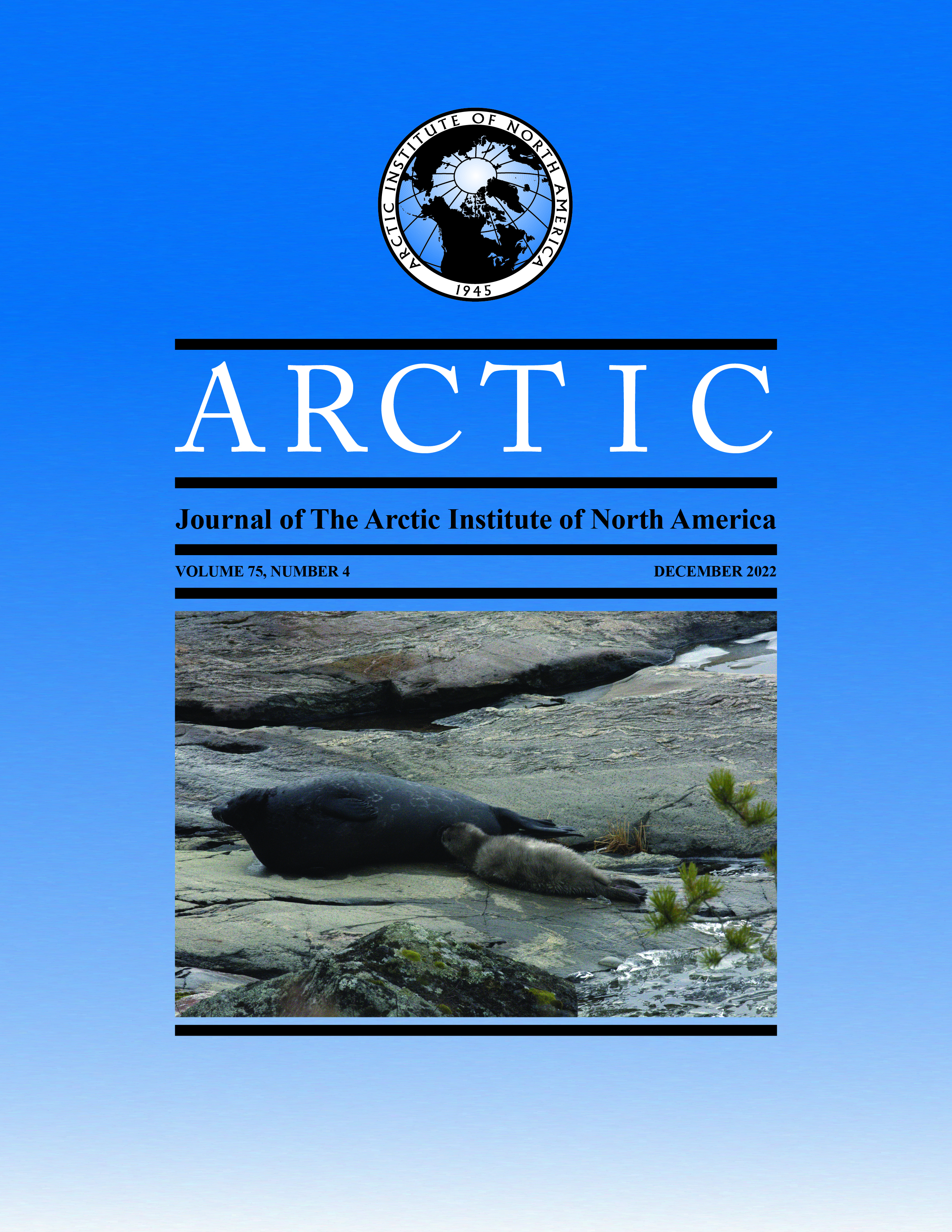Using Visual Observations to Compare the Behavior of Previously Immobilized and Non-Immobilized Wild Polar Bears
DOI:
https://doi.org/10.14430/arctic76118Keywords:
activity budget; behavior; chemical immobilization; handling effects; hunting success; diel cycle; lunar cycle; multinomial logistic regression; polar bear; Ursus maritimusAbstract
During 17 field seasons between 1973 and 1999, we conducted a long-term study of the behavior of undisturbed wild polar bears in Radstock Bay, southwest Devon Island, Nunavut. In a subset of 11 seasons (6 spring and 5 summer) between 1975 and 1997, we used three different drug combinations to chemically immobilize a small number of adult and subadult polar bears on an opportunistic basis and applied a temporary dye mark so that individual bears could be visually reidentified. We then used multinomial logistic regression to compare the behavior of 35 previously immobilized bears of five different demographic classes (sex, age, and reproductive status) to the behavior of non-immobilized bears of the same demographic classes in the same years and seasons. During the first two days after immobilization, bears slept significantly more and spent less time hunting than did bears that had not been immobilized. However, previously immobilized bears returned to the same behavioral patterns and proportion of total time spent hunting as non-immobilized bears within two days and no further negative behavioral effects were detected in the following 21 d. We visually confirmed successful hunting by three adult bears within 0.4 to 2.1 d of being immobilized, all of which went on to make additional kills within the following 24 h. The return to normal behavior patterns, including the ability to hunt successfully, within 48 h of immobilization appears consistent with the hypothesis that polar bears do not experience longer-term behavioral effects following brief chemical immobilization for conservation and management purposes.
Downloads
Published
Issue
Section
License
Copyright (c) 2022 ARCTIC

This work is licensed under a Creative Commons Attribution 4.0 International License.


